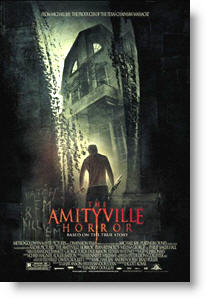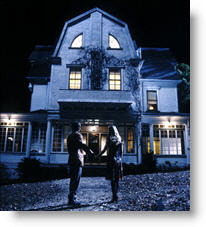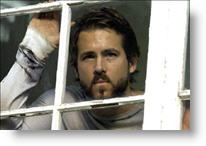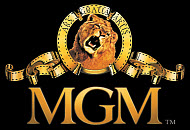The Amityville Horror
 for violence and terror, sexuality, language and brief drug use.
for violence and terror, sexuality, language and brief drug use.
Reviewed by: Kenneth R. Morefield, Ph.D.
CONTRIBUTOR
| Moral Rating: | Extremely Offensive |
| Moviemaking Quality: |
|
| Primary Audience: | Adults |
| Genre: | Supernatural-Horror Remake |
| Length: | 1 hr. 40 min. |
| Year of Release: | 2005 |
| USA Release: |




| Featuring |
|---|
| Ryan Reynolds, Melissa George, Jimmy Bennett, Jesse James, Rachel Nichols |
| Director |
|
Andrew Douglas |
| Producer |
| Michael Bay, Andrew Form, Brad Fuller |
| Distributor |
“Based on the true story”
Michael Bay produces a remake of the classic 1979 horror film about a house that is haunted by the victims of a murder that took place in it. Ryan Reynolds and Melissa George play George and Kathy Lutz, the couple who take an achingly long time to figure out that their dream home isn’t all that it’s cracked up to be. Rated “R” for language, a brief sex scene, drug use, and lots and lots of gory, violent images, including depictions of torture and the murder of children.
Sequel: “Amityville: The Reawakening” (2016)
It would be easy enough, in response to “The Amityville Horror,” to write a typical “the apocalypse is upon us” review about how much gorier, more violent, and bloodthirsty the typical contemporary horror film is than its predecessors. It would be easier still to write a cynical, “what were you expecting when you bought a ticket to ‘The Amityville Horror’?” review. As I drove home from this relentlessly depressing exercise in cinematic shock, I tried to picture two circles—one that contained people who would look up a film on a Christian review web site, the other that would contain people who might buy a ticket to this film. The people that would reside in the intersection of those two circles would, theoretically, be the intended reading audience for this review. I use the word “theoretically” deliberately, because, honestly, I can’t for the life of me envision the person who lives in that intersection. (If you exist, please e-mail me and let me know who you are and what sort of information about the film you were looking for, and I will try to include it when I review “The Exorcism of Emily Rose.”)
For the benefit of those in the first circle who, inconceivably, are still on the fence about whether this film would be appropriate viewing for their own entertainment or that of their offspring (or others who might be beholden to their judgment), I will say, officially, that if you are the sort of consumer or Christian who has ever used the words “film” and “appropriate” in an interrogative sentence, then the answer is, no big shocker here, “no.”
The rest of the review, then, is for the benefit of the second circle—those who, for whatever reason, might watch the film or others like it, and then be curious as to what others think of it or what its popularity (or even existence) says about the culture that produced it.
The original film version of “The Amityville Horror” came in 1979, at the end of the decade over which “The Exorcist cast a long shadow. One thing that horror stories tell us, from “Beowulf” in dark ages to “Dracula” at the close of the Victorian age, is what the culture fears. In the 1970s it was the supernatural, anything that could threaten the materialist myth of technology and progress that was already shaking from the turbulent 60s. By the 1980s, the horror genre had been reduced to a self-parody, the Jason’s and Freddy’s being pale shadows of the Gordon Geckos (“Wall Street”), “Fatal Attraction(s)” and “Terminator(s)” that fueled our deepest fears—that evil was a thing inside of us or made by us, not something outside trying to get in—that the biggest monsters were merely exaggerated versions of ourselves.
That cycle is nothing new, of course. The institutional horrors of slavery and patriarchy in 18th century authors such as Crevecoeur and Rowson gave way to the personal, psychological demons of Hawthorne, Melville, and Poe in the 19th century. The Romantics in turn gave way to the modernists and naturalists who again saw evil as something outside the soul, something institutional or environmental that warped and crushed the human spirit. Part of what made the aforementioned “Exorcist” so creepily effective is that it represented a revolution in this ongoing cycle, a turning away from the internal portraits of evil shown in “Psycho” (1960) and “In Cold Blood” (1967) by putting a supernatural twist on the traditional monster tale.
If “The Exorcist” cast its shadow over the 70s, the horror film that loomed over the 90s was, of course, Jonathan Demme’s “The Silence of the Lambs.” Fusing the horror genre with the police drama, Jonathan Demme’s chilling classic created a new sub-genre of horror, the serial killer flick, that cast man in the role of monster previously occupied by pythons, raptors, robots, and other ill formed offspring of our fervent (and often perverse) imagination.
One of the deepest flaws of “The Amityville Horror” is that it does not know which tradition it wants to evoke. In the before-the-credits depiction of the murders, the psychotic murderer is shown with a book on his end table entitled something along the lines of Evil is Evidence of God. Is this meant to be an echo of “The Exorcist” or a veiled allusion to religious zealotry akin to “Frailty?
As the scenes progressed, the film, rather than presenting a coherent narrative that would symbolize particular cultural fears, opted instead for a pastiche of generic horror movie motifs and situations. I kept revising the mental list of antecedents in each scene in hopes that I would see a pattern emerge in what films or themes were evoked, but no such luck. There were seeds of domestic horror as Kathy Lunz saw her second husband deteriorate into a crazed lunatic (“The Shining,” “Sleeping With the Enemy”). Both parents must deal with the suburban fears of losing their children—to insanity, accidents, or unvetted babysitters (“Godsend,” “The Hand That Rocks the Cradle”). There are nursery tale fears of the parent gone crazy (“Carrie”), and a gratuitous back story about a crazed missionary who tortured native Americans to remind the viewers that it’s not merely the house that is haunted by vicious murders, it’s the whole country (“Poltergeist”).
There are even vague reminders of Eddie Murphy’s famous stand-up comedy monologue asking why stupid people would stay in a house after all these things started happening. Murphy’s explanation, and the film’s, is that the strain created by buying a house above one’s means creates an acute sort of debt bondage that makes otherwise normal people insanely forget the fact that things matter less than people. (Think “The Money Pit” played as a horror movie rather than a comedy.)
The absence of any one, cogent, approach to (and explanation of) evil in the film, though, ultimately backfires. When a film tries to be about everything, it ends up being about nothing, and “The Amityville Horror” is exhibit “A” of this maxim. The images and situations can shock or disgust, but they can’t really horrify, because they are, despite the film’s urgent and incessant reminders that it is “BASED ON A TRUE STORY!,” ultimately just images of actors going through the motions.
As is the case with so many action or horror films about nothing, it ends with a long montage where the average shot is no longer than a second or two. This frantic cutting can create a sense of urgency, or at least dizziness, even if a film has failed to make us care about the characters in it or what happens to them. Ultimately what we are left with here is a series of disparate horrific images that may linger in the memory long after the flimsy excuse for a plot that justifies their delivery has faded away.
Offendable Christians who stumble into the film will probably have their ire drawn to the portrait of Rev. Ketcham like a magnet, but for my money, the most grating component of the film was Philip Baker Hall’s yawn-and-you-missed-it cameo as Father Callaway, a priest whose exorcism attempt can’t finish half a room before the house kicks him and his impotent faith back to the impotent church from which he came.
In these two clerical figures, the film seamlessly and simultaneously manages to present the Christian faith as the root of all evils (the minister torturing the native Americans) and the cowardly lion that abandons all those who look to it for help from the evils it has unleashed. But hey, Kathy wears a cross, and she eventually picks up a shotgun to defend her children against the axe wielding demon she chose to stepfather her children, so Christians can’t be all bad, can they?
My Grade: F
Violence: Extreme / Profanity: Heavy / Sex/nudity: Moderate
See list of Relevant Issues—questions-and-answers.


The movie itself was only okay. And, if it was supposed to be scary.it wasn’t.it was disgusting. I thought portraying a priest as a man who would run away from the evil he was trying to exorcise and abandoning a family in their time of need was pathetic.
Unfortunately, the frequent use of the “f-word” and the VERY violent, bloody images weren’t what disturbed me most. What did disturb me was the fact that there were at least 20 children in the theatre under the age of 12 years old, and a handful of them were under 8 years old. None of the parents seemed concerned about the language or images their children were hearing and seeing. If parents are considering this movie, I would strongly advise them to hire a babysitter for the evening or find a more suitable film to view.
Extremely Offensive/2
Average/3
Average/3
Average/4


The movie was dissapointing and could be not recommended to a Christian audience. There are anti-christian undertones present that were not in the first movie or in the book.The story of the minister who is killing the indians was a complete falsehood that never happened and was just added by Hollywood to show Christianity in a bad light (what they love to do) The fact is the house and sorrunding areas were built on Indian burial sites… that is it. There was no bad “minister” that tortured the good non-believing Indians and the priest who was to be representive of the Christian faith shows no backbone, no faith and basically abandons the family in a time of crisis… Not very good view of Christianity and in truth not the least bit accurate.
My Ratings: Very Offensive/1